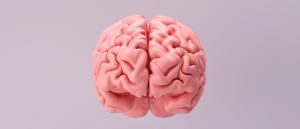Stem cell-gene therapy may provide the answers needed for the treatment of ALS

A recent safety trial provides hope for novel stem cell-gene combination therapy in the treatment of neurological disease, made widely known by a US baseball player.
Amyotrophic lateral sclerosis (ALS), otherwise known as Lou Gehrig’s disease, is a progressive neurological disorder resulting in reduced muscle control. ALS is a fatal disorder, as muscle paralysis slowly prevents an individual’s ability to move, speak and breathe, therefore highlighting the need for novel therapeutic avenues that may improve quality of life and chance of survival for these individuals. Researchers from Cedars-Sinai Medical Center (CA,US) have recently made progress in this field, developing an investigational therapy that combines stem cell and gene therapy to potentially prevent dysfunction of the motor neurons of ALS patients.
The therapy utilized stem cells that were engineered to produce the protein glial cell line-derived neurotrophic factor (GDNF), which is capable of passing through the blood–brain barrier. This protein is able to promote the survival of motor neurons and as a result, the passage of signals from the brain or spinal cord to muscles.
Clive Svendsen, senior author and researcher at Cedars-Sinai Regenerative Medicine Institute, commented: “Using stem cells is a powerful way to deliver important proteins to the brain or spinal cord that can’t otherwise get through the blood–brain barrier. We were able to show that the engineered stem cell product can be safely transplanted in the human spinal cord. And after a one-time treatment, these cells can survive and produce an important protein over 3 years that is known to protect motor neurons that die in ALS.”
 A diagnostic test for ALS could finally be on its way
A diagnostic test for ALS could finally be on its way
Researchers identify TDP-43 as a potential biomarker for ALS from muscle biopsies, which could lead to future diagnostic tests.
The transplanted stem cells differentiate into GDNF-secreting glial cells, which support motor neurons and promote their survival. “GDNF on its own can’t get through the blood–brain barrier, so transplanting stem cells releasing GDNF is a new method to help get the protein to where it needs to go to help protect the motor neurons,” reported Pablo Avalos, co-lead author and director of Translational Medicine in the Regenerative Medicine Institute. “Because they are engineered to release GDNF, we get a ‘double whammy’ approach where both the new cells and the protein could help dying motor neurons survive better in this disease.”
Delivering the engineered stem cells into only one side of the spinal cord of ALS patients allowed for the other side to act as a control. None of the patients enrolled in the trial experienced severe side effects, and after a year the therapy’s safety was confirmed, as no negative effect was seen on the leg receiving the transplant compared with the untreated leg.
The authors recognize the need for a larger cohort of patients to accurately evaluate the efficacy of this treatment. However, the initial success of this trial provides hope for those impacted by this debilitating disease.